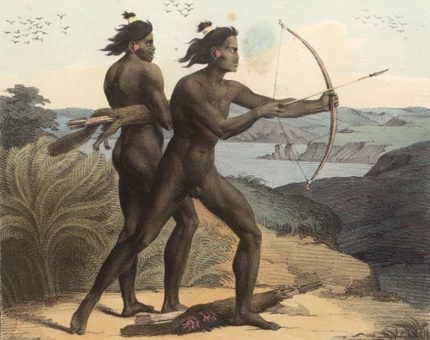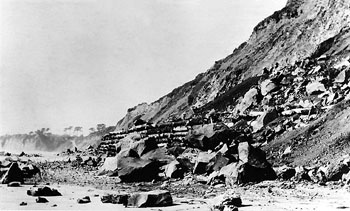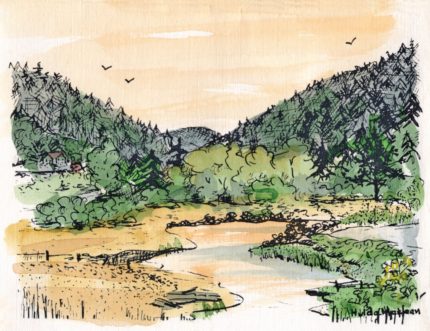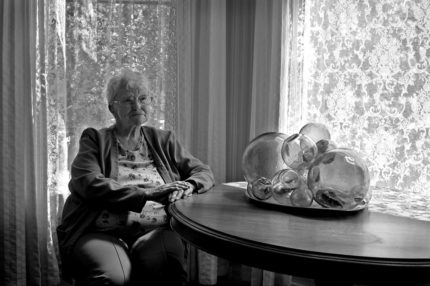Rancho del Oso is a site rich in cultural, as well as natural, history. The area was frequented by Native Americans (most likely the Awaswas clan of Ohlone Costanoan), who managed the land in order to benefit from the bountiful landscape and encourage the proliferation of game.
 Spanish sea expeditions visited the Waddell Valley as early as 1543. The Portola Expedition stopped there in 1769, on its way along the California cost from San Diego to San Francisco Bay. Members of the expedition were dying of malnutrition when they first arrived in the valley. However, the berries and game in the valley quickly restored their health, inspiring them to name it “La Cañada de Salud” (The Valley of Health).
Spanish sea expeditions visited the Waddell Valley as early as 1543. The Portola Expedition stopped there in 1769, on its way along the California cost from San Diego to San Francisco Bay. Members of the expedition were dying of malnutrition when they first arrived in the valley. However, the berries and game in the valley quickly restored their health, inspiring them to name it “La Cañada de Salud” (The Valley of Health).
 A number of farming families settled in the lower part of the Valley in the early 1800s. In the mid 1860s, William Waddell (for whom the creek and valley are named) conducted an extensive timber harvesting operation in the area, which included a mill above the Waddell Forks, a lumber-hauling tramway from the mill to the beach, and a wharf in the lee of Point Año Nuevo. Some remains of these are still visible. The lumber was used extensively in the post–gold-rush building boom in San Francisco. Waddell died in 1875 from an injury inflicted by a grizzly bear, and his timber operations were soon discontinued.
A number of farming families settled in the lower part of the Valley in the early 1800s. In the mid 1860s, William Waddell (for whom the creek and valley are named) conducted an extensive timber harvesting operation in the area, which included a mill above the Waddell Forks, a lumber-hauling tramway from the mill to the beach, and a wharf in the lee of Point Año Nuevo. Some remains of these are still visible. The lumber was used extensively in the post–gold-rush building boom in San Francisco. Waddell died in 1875 from an injury inflicted by a grizzly bear, and his timber operations were soon discontinued.
A major forest fire in 1904 devastated much of the Monterey Bay North Coast, including the Waddell Valley. Several selective timber harvests have been conducted since then, in part to correct the damage left by Waddell’s harvest and the numerous forest fires.
Farming in the lower Waddell Valley, which began before Waddell’s time, has continued into the present. In addition to grazing sheep and dairy cattle, a variety of crops have been grown at various times, including artichokes, sugar beets, oats, and hay. Farmland is currently being leased to organic vegetable growers.
In 1912, Theodore Hoover (Dean of Engineering at Stanford and brother of President Herbert Hoover) bought a majority of the Waddell Valley from over a dozen small land owners. Hoover built the “Brown House” in 1913 as a family vacation house (a role it still serves) and named his holdings Rancho del Oso. In 1925 he built a large Spanish-style residence, the “Casa”, for his family across the creek from the Brown House. Although the Casa was destroyed by fire in 1959, several of Mr. Hoover’s heirs still have residences at Rancho del Oso.
In 1977 California State Parks acquired approximately two-thirds of the original Rancho del Oso land from Hoover’s daughters, including Waddell Beach, enabling the completion of the Skyline-to-the-Sea Trail.
 One of Hoover’s daughters was especially fascinated by the natural beauty of Rancho del Oso. Hulda Hoover spent countless childhood hours observing the plant, animal, and marine life of the area. She shared these skills with her own children, while raising a family at the ranch with husband Charles McLean. Later in life, Hulda began writing down her observations and reflections about the Waddell Valley, and created many watercolor renderings of its scenery.
One of Hoover’s daughters was especially fascinated by the natural beauty of Rancho del Oso. Hulda Hoover spent countless childhood hours observing the plant, animal, and marine life of the area. She shared these skills with her own children, while raising a family at the ranch with husband Charles McLean. Later in life, Hulda began writing down her observations and reflections about the Waddell Valley, and created many watercolor renderings of its scenery.

In 1985 Hulda Hoover McLean, now widowed, sold her personal residence and its forty acre lot to the Sempervirens Fund, intent on creating a place to share the wonders of the natural world with others. After some minor renovations, it was passed on to California State Parks for use as the Rancho del Oso Nature and History Center. Subsequently, Mrs. McLean was very active in organizing the Waddell Creek Association, which helps support the volunteer and educational programs at Rancho del Oso. She served on its board of directors well into her 90’s, and passed away in 2006 at the age of 100.
(Picture credits for this page: The Louis Choris painting of two Ohlone indians can be found on many websites, and is labeled for non-commercial use rights according to Google image search. We downloaded it from foundsf.org. The original is now in Bancroft Library at UC Berkeley (image #brk00001577_24a). The photo of William Waddell’s tram is from the Santa Cruz Public Library’s website, www.santacruzpl.org/history/articles/446/. The photo of Hulda Hoover McLean and of her watercolor are from the Rancho del Oso collection.)
